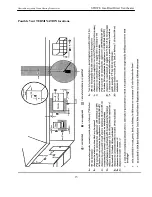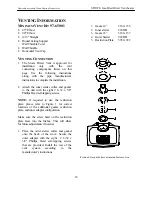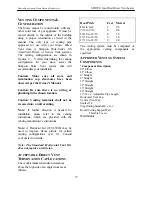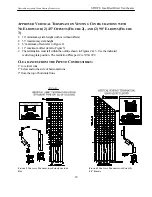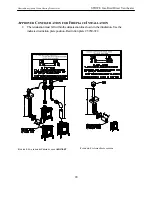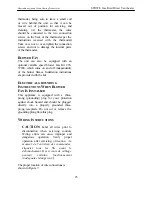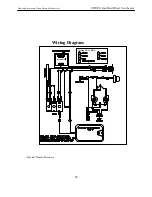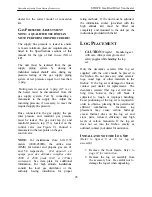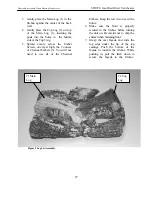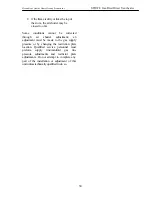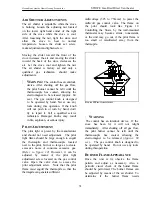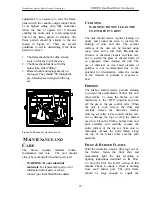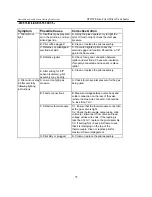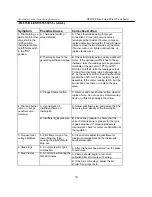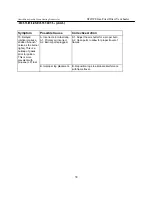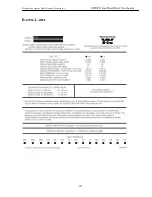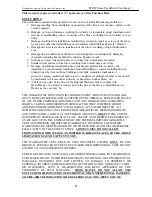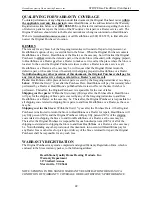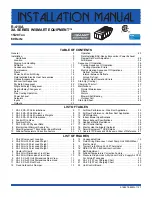
HearthStone Quality Home Heating Products Inc
STOWE Gas-Fired Direct Vent heater
29
P
REPARE
F
OR
L
IGHTING
Prepare for the lighting procedure by
adjusting the thermostat (if equipped) to its
lowest setting or OFF position. If the gas
control knob is not in the OFF position, turn
the knob fully clockwise to OFF. Locate the
variable output control knob and turn it fully
clockwise to the highest setting.
Prior to lighting the unit for the first time,
wait 5 minutes to allow any residual gas
within the unit to dissipate. Smell all around
the appliance area for gas. Be sure to smell
next to the floor because some gases are
heavier than air and will settle on the floor.
If you do not smell gas after this five-minute
period, proceed with the lighting procedure.
If you do smell gas, DO NOT proceed with
the lighting procedure. Instead,
immediately
refer to the What To Do If You Smell Gas
Warning, on the cover of this manual.
I
NITIAL
A
DJUSTMENTS
Once the Stowe has been set in place,
connected and assembled as described in the
Clearances To Combustibles, Venting
Components & Configurations, Electrical
Connections, And Gas Supply and
Connections sections of this manual, the unit
is almost ready to be lit for the first time.
The manufacturer tests each unit prior to
shipment, so ignition should take place
without failure. However, a number of small
adjustments may be necessary to
compensate for variations in gas pressure,
altitude, and other factors particular to each
installation.
V
ARIABLE
O
UTPUT
C
ONTROL
The gas control valve is equipped with a
variable output control. This control varies
the rate of heat produced by the unit by
varying the gas pressure to the main burner
tube. A combination of heat output and the
thermostat setting affect the length of the
burn cycle. If your stove turns on and off too
often, try, first, reducing the burn cycle by
turning the HI/LOW knob, on the control
valve, to a lower setting. Using the variable
output control, the heat output of the unit
can be reduced for mild fall and spring
months, or maximized for the colder winter
months. This adjustment can be made, by
the homeowner, as necessary by turning the
variable output control knob to “HI”, “LO”
or any setting in between.
A
IR
S
HUTTER
The air shutter is used to regulate the air-to-
gas combustion mixture, which in turn
influences the size and color of the flames.
The air shutters have been positioned in the
general location needed for the type of gas
being used, however, if the unit is not
burning as well as it should, then the air
shutters may need adjusting. The air shutter
may need adjustment once the unit has been
installed to compensate for variations in
supply line
pressure, restriction plate
position, altitude, gas type conversions, and
other variables.
To determine if the air shutter needs
adjustment, it is necessary to view the flame
pattern with the variable output control knob
at its highest setting. Allow the unit to
operate for 10 minutes to allow the entire
unit to reach temperature and for the flame
pattern to stabilize. Generally, the more air
(open shutter) in the mixture, the bluer the
flame. Less air (closed shutter) results in a
more yellow flame, but too little air will
result in incomplete combustion, low
efficiency and a dirty burn. There are two
simple guidelines to aid in determining the
correct flame pattern:
1. if the flame at the base of the logs is
completely blue, the air shutter may
be open too far;

